Inexpensive and Creative Art Projects for Kids
Are you looking for ways to spark your child's creativity without breaking the bank? Look no further! This article explores a variety of affordable and imaginative art projects that can inspire creativity in children while being easy on the budget. Whether you're a parent, teacher, or caregiver, these unique ideas are not only fun but also engaging, making them perfect for kids of all ages. Let’s dive into a world where imagination knows no bounds and creativity flourishes!
Using everyday items like cardboard, plastic bottles, and newspapers, kids can create amazing art projects that promote sustainability and creativity. Imagine transforming trash into treasure! Kids can make sculptures, collages, or even functional items like bird feeders using materials that would otherwise end up in the landfill. This not only encourages artistic expression but also teaches them the importance of recycling and environmental stewardship. For instance, a simple cardboard box can become a rocket ship or a cozy little house for their toys. The possibilities are endless!
Encouraging children to use natural materials opens up a world of creativity. Imagine crafting with leaves, twigs, and stones! These projects foster a connection with nature while allowing for endless creative possibilities. Children can gather materials during a nature walk, which not only sparks creativity but also teaches them about their environment. By incorporating elements from the outdoors, kids can create art that reflects the beauty of the world around them.
Leaf printing is a simple yet beautiful way for kids to explore nature. By using paint and leaves, children can create stunning art pieces that celebrate the beauty of the outdoors. The process is straightforward and allows for a lot of experimentation. Kids can choose leaves of different shapes and sizes, dip them in paint, and press them onto paper to create unique prints. This activity not only nurtures their artistic skills but also instills a sense of appreciation for nature.
Before starting the project, kids can enjoy a nature walk to collect various leaves. This activity is not just about gathering materials; it’s an adventure! As they explore, they can learn about different plant species, their textures, and colors. This interaction with nature enhances their observational skills and deepens their understanding of the environment.
Once the leaves are collected, children can experiment with paint and create unique patterns. This process encourages artistic expression and helps develop fine motor skills. They can mix colors, overlap prints, and even add their own artistic touches with markers or crayons. It’s a wonderful way to let their imagination run wild while creating beautiful art pieces that they can proudly display at home.
Rock painting is another delightful activity where kids can decorate stones with vibrant colors and designs. This craft allows for creativity while also making decorative items for the garden or home. Kids can paint cheerful animals, inspirational words, or even abstract designs on rocks, turning ordinary stones into eye-catching art. Plus, it’s a great way to encourage outdoor play—after all, who doesn’t love a little treasure hunt for the perfect rock?
Creating homemade art supplies is a fun way to engage kids in the crafting process. Instead of running to the store, why not whip up some supplies right at home? This section offers recipes for items like homemade paint, playdough, and glue. Not only does this save money, but it also allows kids to learn about the materials they are using. For example, making playdough can be a fun kitchen experiment that results in hours of creative play!
Making paint at home is simple and can be done using common kitchen ingredients. Here’s an easy recipe that kids can follow:
Ingredients: - 1 cup of flour - 1 cup of water - 1/2 cup of salt - Food coloring Instructions: 1. Mix flour and salt in a bowl. 2. Gradually add water until smooth. 3. Divide the mixture into containers and add food coloring. 4. Stir until you achieve your desired color.
This engaging activity promotes hands-on learning and allows kids to experiment with colors in a fun, interactive way!
Kids can explore the world of colors by creating natural dyes from fruits and vegetables. This project teaches them about color mixing and the science behind dyes in a fun way. For example, beet juice can create a beautiful pink hue, while spinach can yield a lovely green. Not only do they learn about colors, but they also discover how to use everyday food items creatively.
This section introduces art projects that align with various seasons and holidays. Kids will enjoy making crafts that celebrate the changing seasons and special occasions throughout the year. Seasonal crafts not only keep the artistic spirit alive but also help children connect with the time of year and its unique characteristics.
In spring, children can create beautiful flower crafts using paper, fabric, or even real flowers. These projects encourage exploration of colors and shapes while celebrating nature's beauty. Kids can make flower crowns, paper bouquets, or even plant seeds in decorated pots, fostering a love for gardening and nature.
During the winter season, kids can craft decorations for holidays like Christmas and Hanukkah. This section provides ideas for creating festive ornaments and gifts that spread joy. From homemade ornaments to personalized cards, these crafts not only bring a sense of accomplishment but also create cherished memories during the holiday season.
- What materials do I need for these projects? Most projects use common household items and natural materials, making them budget-friendly and accessible.
- Are these projects safe for young children? Yes! Always supervise young children during art projects, especially when using scissors or small items.
- Can these projects be adapted for older kids? Absolutely! You can increase the complexity of the projects or introduce new techniques to keep older kids engaged.

Recycled Materials Art
Have you ever looked at a pile of cardboard boxes or empty plastic bottles and thought, "What a waste!"? Well, it's time to change that mindset! is not only a fantastic way to keep kids engaged, but it also teaches them the importance of sustainability. By using everyday items that would typically end up in the trash, children can unleash their creativity and transform these materials into stunning works of art. Imagine turning an old cereal box into a vibrant sculpture or using plastic bottle caps to create a colorful mosaic! The possibilities are endless.
One of the best things about recycled materials art is that it encourages children to think outside the box—literally! They can experiment with different textures, shapes, and colors, allowing their imaginations to run wild. For instance, here are a few fun project ideas to get started:
- Cardboard City: Gather various cardboard pieces and let kids build their own miniature city. They can create buildings, parks, and even roads!
- Plastic Bottle Planters: Turn empty plastic bottles into unique planters. Kids can decorate them and plant flowers or herbs, fostering a love for gardening.
- Newspaper Collage: Use old newspapers to create a collage. Kids can cut out pictures and words to express their thoughts or tell a story.
Not only do these projects spark creativity, but they also provide a hands-on approach to learning about recycling and the environment. As children work on their art, they can discuss why it's essential to reduce waste and how they can contribute to a healthier planet. This discussion can lead to some meaningful conversations about sustainability, making it an educational experience as well.
Furthermore, creating art from recycled materials is incredibly budget-friendly. You don’t need to spend a fortune on fancy supplies when you can find treasures in your own home! Encourage your kids to raid the recycling bin and see what they can come up with. They’ll be amazed at how much fun they can have with items they once considered trash.
So, gather your recycled materials, unleash your creativity, and watch as your kids turn everyday items into extraordinary art pieces. Remember, every masterpiece starts with a little imagination and a lot of heart!
Q: What types of materials can we use for recycled art projects?
A: You can use a wide variety of materials such as cardboard, plastic bottles, newspapers, tin cans, and old fabric. Almost anything that would typically be thrown away can be transformed into art!
Q: How can we encourage kids to be more creative with recycled materials?
A: Provide them with a variety of materials and let them explore! Give them prompts or themes to inspire their creations, but allow them the freedom to come up with their own ideas. Sometimes the best art comes from spontaneous creativity!
Q: Are there any safety concerns when using recycled materials?
A: Yes, always supervise children when using sharp objects like scissors or hot glue guns. Make sure the materials are clean and safe to handle. If you're using items like tin cans, ensure that the edges are smooth to prevent cuts.
Q: Can recycled materials art be displayed or gifted?
A: Absolutely! Many recycled art projects can be proudly displayed at home or even gifted to family and friends. It adds a personal touch and showcases the creativity of your child.
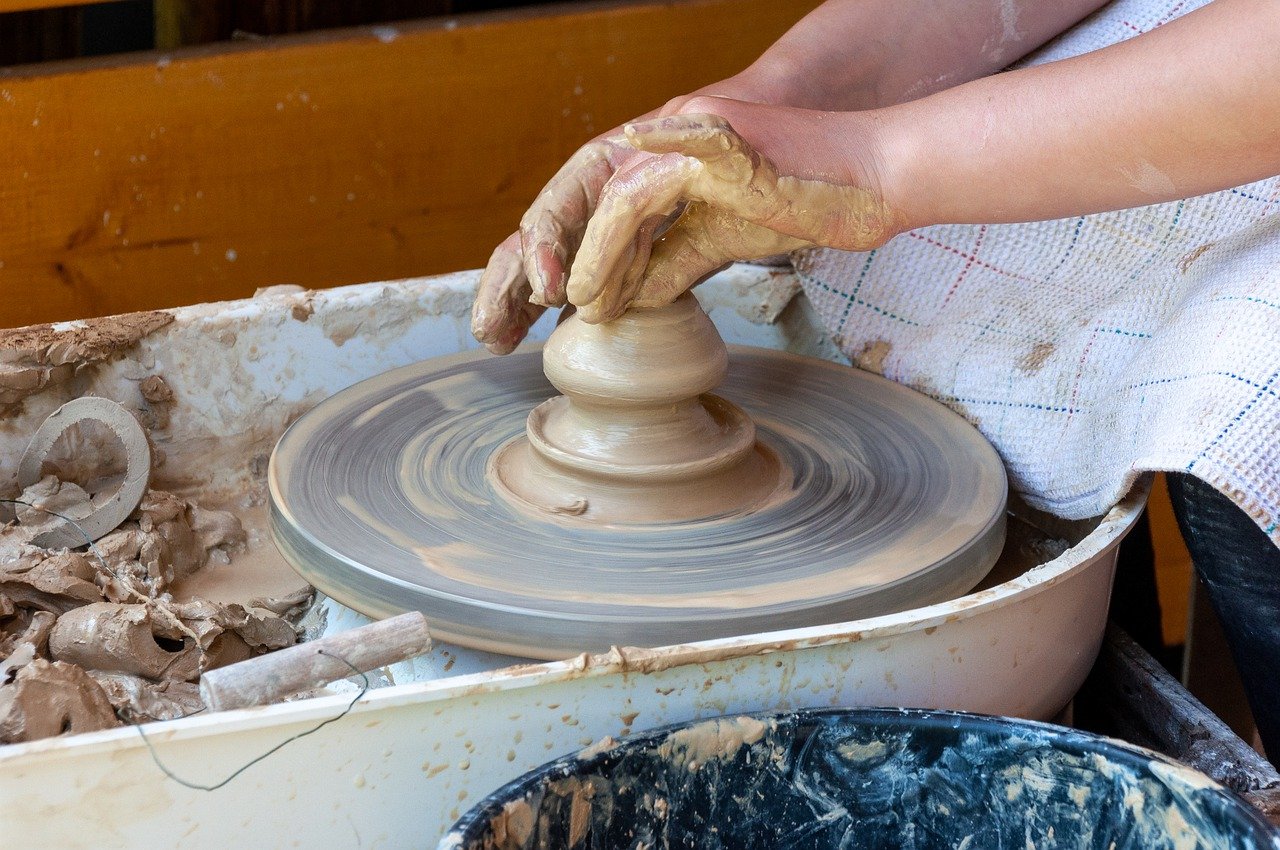
Nature-Inspired Crafts
Encouraging children to delve into the world of nature is not just a fun activity; it's a fantastic way to foster creativity and a sense of appreciation for the environment. Nature-inspired crafts allow kids to use materials that are readily available around them, transforming simple twigs, leaves, and stones into beautiful works of art. Imagine the joy on their faces as they explore the outdoors, collecting treasures to turn into masterpieces! These projects not only spark imagination but also teach kids about the natural world, making learning an enjoyable experience.
One of the most delightful aspects of nature-inspired crafts is that they can be tailored to any season, providing endless opportunities for creativity. For instance, in the spring, vibrant flowers can be used for crafting, while autumn brings a rich palette of colorful leaves. Not to mention, these projects can be as simple or as complex as you want them to be, making them suitable for various age groups. So, whether you're looking for a quick afternoon activity or an extensive project that spans several days, nature offers the perfect backdrop for artistic exploration.
Leaf printing is a simple yet beautiful way for kids to explore nature. By using paint and leaves, children can create stunning art pieces that celebrate the beauty of the outdoors. This activity not only allows for artistic expression but also encourages kids to observe the intricate details of leaves. They can notice the veins, shapes, and colors, which can lead to discussions about plant biology and the importance of trees in our ecosystem.
Before diving into the printing process, kids can embark on a nature walk to collect various leaves. This excursion is not just about gathering materials; it’s an adventure! As they stroll through parks or backyards, they can learn to identify different types of trees and plants. Encourage them to look for leaves of various shapes, sizes, and colors. This activity not only sparks creativity but also teaches them about different plant species, enhancing their observational skills.
Once the leaves are collected, the real fun begins! Children can experiment with paint and create unique patterns by pressing the leaves onto paper. This process encourages artistic expression and helps develop fine motor skills as they manipulate the leaves and paint. The excitement of seeing the prints emerge can be exhilarating. Each print is a surprise, showcasing the beauty of nature in a way that’s entirely unique to their artistic vision. This craft not only results in beautiful artwork but also provides a hands-on lesson in color mixing and pattern creation.
Another delightful activity for kids is rock painting. This craft allows children to decorate stones with vibrant colors and designs, turning ordinary rocks into decorative items for the garden or home. Imagine a collection of painted rocks, each telling a story or displaying a unique design! This activity not only nurtures creativity but also provides an opportunity for children to express their personalities through art. They can paint animals, flowers, or even inspirational quotes, making it a perfect gift for family and friends.
In addition to being a fun project, rock painting can also be a great way to teach kids about environmental stewardship. Discuss how rocks are a natural resource and how they can be used to enhance the beauty of their surroundings. Encourage them to place their painted rocks in their gardens or around their homes, creating a personal touch that brings joy to everyone who sees them.
Overall, nature-inspired crafts are a fantastic way to engage children in creativity while fostering a connection with the environment. By using materials found in nature, kids can create art that is not only beautiful but also meaningful. So, grab your paint, gather some leaves, and let the creativity flow!
Q: What materials do I need for leaf printing?
A: You will need leaves, paint, and paper. Optionally, you can use brushes and sponges for more intricate designs.
Q: Can we use any type of leaves for printing?
A: Yes! Different types of leaves will create unique prints, so feel free to experiment with various shapes and sizes.
Q: How do we make sure the paint sticks to the leaves?
A: Using acrylic or washable paint works best as they adhere well to the leaves and provide vibrant colors.
Q: What should we do with the painted rocks?
A: Painted rocks can be used as garden decorations, gifts, or even as part of a scavenger hunt for friends and family!
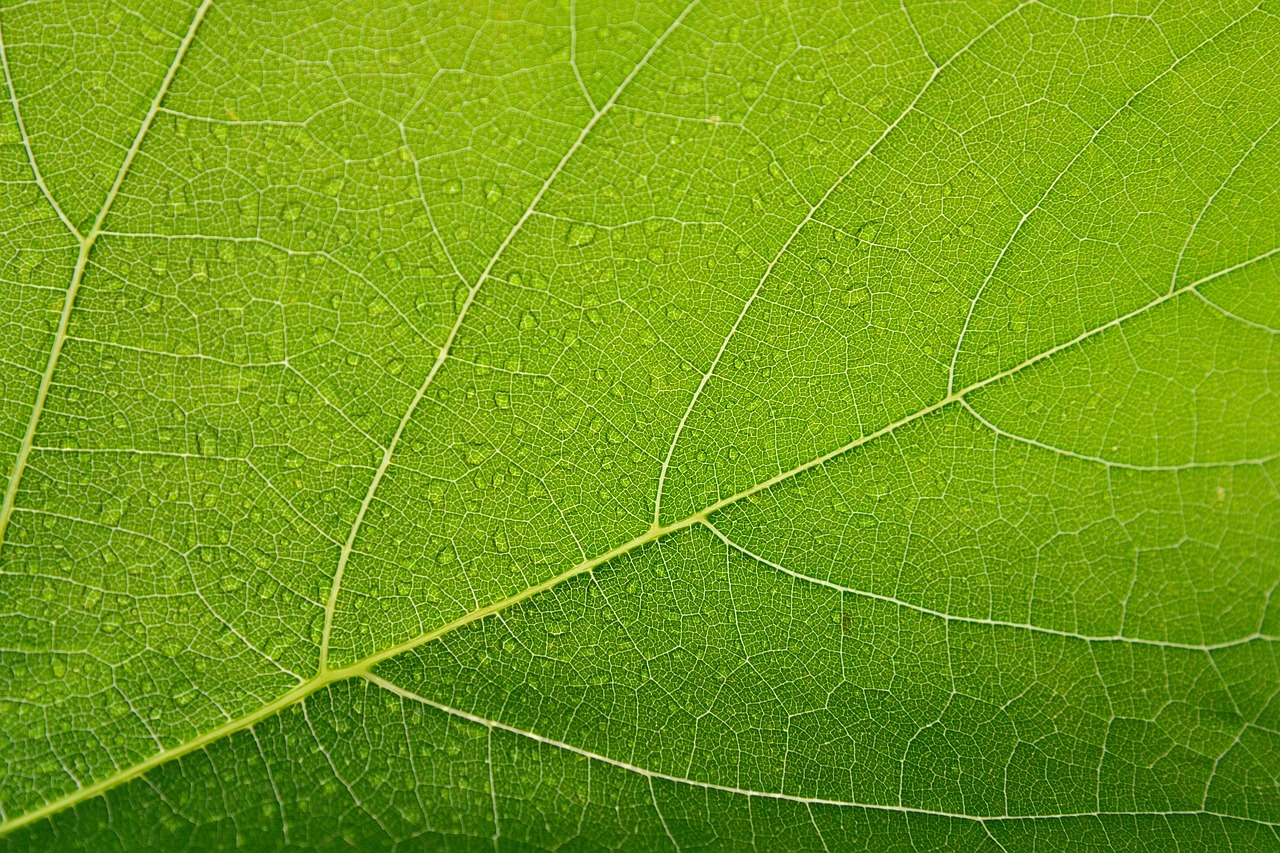
Leaf Prints
Leaf printing is not just a craft; it's a delightful way for kids to connect with nature while unleashing their creativity. Imagine walking through a sun-dappled forest, the crunch of leaves underfoot, and the vibrant colors of autumn all around. Now, picture your child collecting those very leaves and turning them into stunning pieces of art! With just a few supplies and a sprinkle of imagination, the humble leaf transforms into a canvas for creativity.
To kick off this engaging project, children can embark on a nature walk to gather leaves of various shapes and sizes. This is not only an opportunity to enjoy the great outdoors but also a chance to learn about different plant species. As they collect leaves, they can discuss the textures, colors, and patterns they observe. This part of the activity fosters curiosity and appreciation for the environment, making it an educational experience as well.
Once the leaves are collected, it’s time to bring them to life with paint! Kids can use non-toxic acrylic paints or even homemade paint to create their unique leaf prints. They can experiment with different colors, applying the paint directly onto the leaves and pressing them onto paper. This process allows for endless creativity, as children can create various patterns and designs. The excitement builds as they lift the leaves to reveal their beautiful prints, each one a unique masterpiece!
Here’s a quick overview of the steps involved in creating leaf prints:
- Collect Leaves: Gather a variety of leaves from your backyard or a local park.
- Prepare the Workspace: Lay down newspaper or a plastic sheet to keep the area clean.
- Apply Paint: Use a brush to apply paint to one side of the leaf.
- Press and Print: Press the painted leaf onto paper and gently lift it to reveal the print.
- Let Dry: Allow the prints to dry completely before displaying them.
Not only does this activity promote artistic expression, but it also helps develop fine motor skills as children manipulate the leaves and paint. Plus, it’s a wonderful way to engage in conversation about nature, colors, and art. The end result? A collection of vibrant leaf prints that can be framed, turned into greeting cards, or even used as unique wrapping paper!
So, the next time you’re looking for a creative and educational project to do with your kids, consider leaf printing. It’s a simple yet enriching experience that can spark a lifelong love for art and nature.
Q: What type of leaves work best for printing?
A: Leaves with prominent veins and shapes, such as maple or oak, work particularly well for printing as they create more defined patterns.
Q: Can we use other materials besides paper for printing?
A: Absolutely! You can use fabric, canvas, or even cardboard for a different texture and effect.
Q: What if we don’t have paint at home?
A: You can make homemade paint using flour, water, and food coloring, or use natural dyes from fruits and vegetables!

Collecting Leaves
Before diving into the colorful world of leaf printing, there's a delightful adventure waiting just outside your door: a nature walk! This is not just any stroll; it's an opportunity for kids to connect with the environment while gathering materials for their artistic endeavors. Imagine the excitement as they search for leaves of different shapes, sizes, and colors, each one a potential canvas for their creativity.
As they wander through parks or backyards, encourage them to look for leaves that are vibrant and unique. They might find maple leaves with their iconic lobed edges, oak leaves with their rugged texture, or even delicate birch leaves that flutter gently in the breeze. Each leaf tells a story of its own, reflecting the changing seasons and the beauty of nature. It's a fantastic way to teach kids about biodiversity and the importance of preserving our environment.
While collecting, remind them to consider the following:
- Choose a variety of leaves to create diverse prints.
- Look for leaves that are flat and intact for the best results.
- Discuss the colors and textures of the leaves they find.
Once they’ve gathered their leafy treasures, it’s time to head home and prepare for some artistic fun! This activity not only sparks creativity but also fosters a deeper appreciation for nature and its wonders. So, lace up those shoes, grab a bag, and let the leaf-collecting adventure begin!
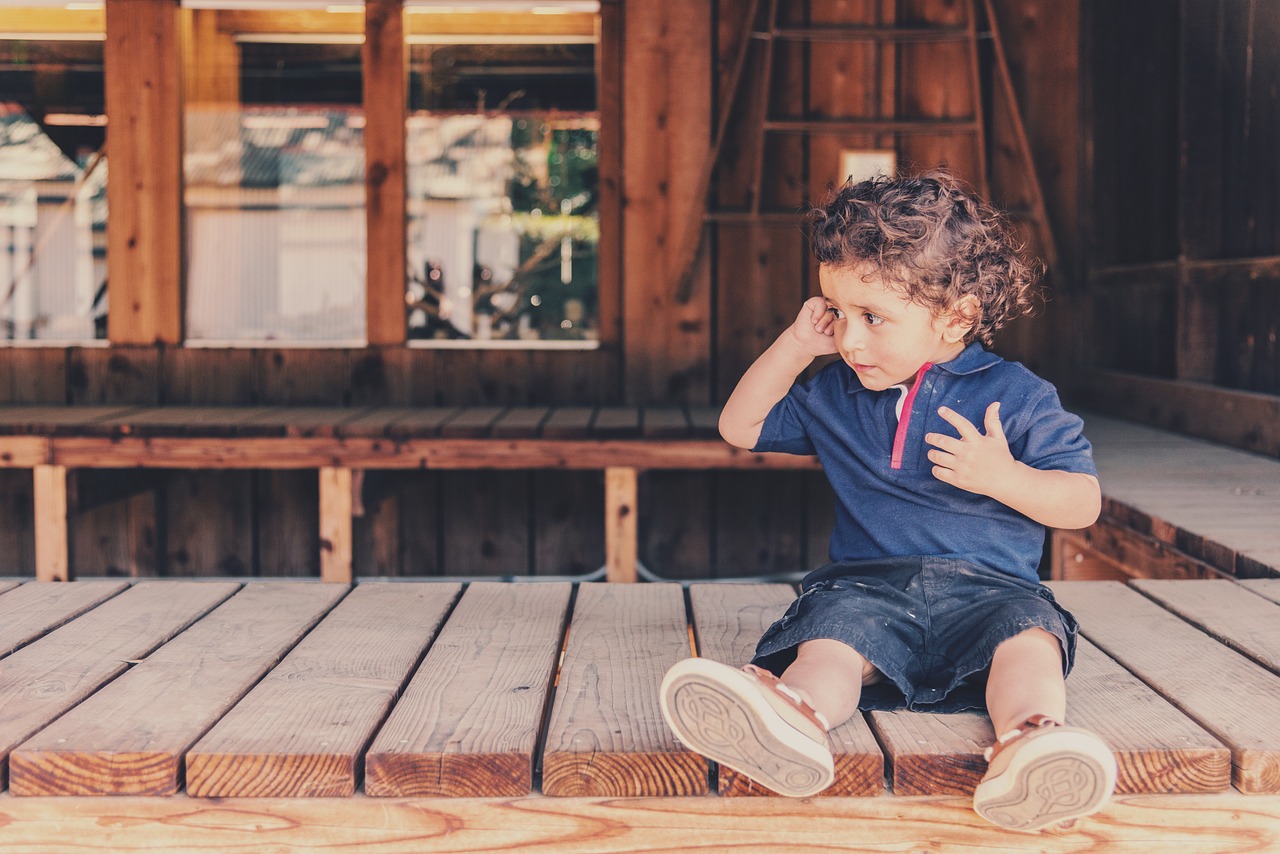
Creating Patterns
Once the leaves are collected and you're ready to dive into the world of creativity, the real fun begins! with leaves is not just about slapping some paint on them; it’s an exciting journey of exploration and artistic expression. Imagine the thrill of transforming a simple leaf into a stunning masterpiece! Children can use various colors of paint to create unique designs, turning each leaf into a canvas of its own. This process is not only about making art; it’s about discovering the beauty of nature and the joy of creation.
To start, kids can choose a variety of leaves, each with its own shape and texture. It’s fascinating how different leaves can produce such diverse patterns. For example, a smooth leaf might create a soft, gentle print, while a jagged leaf could result in a bold, striking design. This variation opens up a world of possibilities and encourages children to experiment. They can:
- Try using different colors to see how they mix and blend.
- Layer multiple prints on top of each other to create depth.
- Incorporate additional materials like glitter or markers for added flair.
As they paint, kids can learn about color theory too! Mixing colors to create new shades not only enhances their understanding of art but also sparks conversations about how colors interact with one another. This hands-on experience fosters a sense of accomplishment as they see their ideas come to life. Plus, it’s a fantastic way to develop fine motor skills, as they practice controlling the brush and applying the right amount of pressure.
Once the patterns are created, kids can display their artwork proudly. Whether they choose to frame their leaf prints or use them as decorations around the house, the joy of seeing their creations on display is immensely rewarding. This activity not only nurtures creativity but also instills a sense of pride in their work. So, gather those leaves, unleash your imagination, and watch as nature and art come together in a beautiful dance of colors and patterns!
Q: What types of leaves work best for printing?
A: Generally, flat and broad leaves like maple or oak are great for printing. However, experimenting with different shapes can lead to surprising results!
Q: Can we use other materials besides paint?
A: Absolutely! You can use ink, fabric dye, or even colored pencils to create different effects and textures.
Q: How can we preserve the leaf prints?
A: Once the prints are dry, you can spray them with a clear sealant to protect them from fading and damage.

Rock Painting
Rock painting is an enchanting and delightful activity that allows kids to unleash their creativity while engaging with nature. Imagine transforming ordinary stones into vibrant pieces of art that can brighten up your garden or home! This craft is not only fun but also encourages children to express themselves artistically. All you need are some smooth rocks, paints, and brushes, and you're ready to dive into a world of color and imagination.
Before starting, it's a good idea to gather your materials. You can find rocks in your backyard, at a local park, or even at a craft store. Make sure to wash the stones thoroughly to remove any dirt or debris, as this will help the paint adhere better. Once they're clean and dry, the fun can truly begin! Kids can use a variety of painting techniques, from simple brush strokes to sponging or even dot painting. The possibilities are endless!
Here are some ideas to spark inspiration:
- Nature Themes: Paint flowers, trees, or animals on the rocks to celebrate the beauty of the outdoors.
- Inspirational Quotes: Write encouraging messages or quotes that can be displayed in the garden or around the house.
- Seasonal Designs: Create rocks that reflect the current season, like snowflakes for winter or sunflowers for summer.
Once the rocks are painted, consider sealing them with a clear acrylic spray to protect the artwork from the elements. This step ensures that your creations will last for a long time, allowing children to admire their handiwork for years to come. Plus, these decorative rocks can make wonderful gifts for family and friends, spreading joy and creativity beyond your own home.
Rock painting is more than just a craft; it’s a beautiful way to bond with your children. As you paint together, you can share stories, laugh, and enjoy each other's company. It’s these moments of connection that make the experience truly special. So grab some rocks, gather your paints, and let the creativity flow!
Q: What type of paint should we use for rock painting?
A: Acrylic paint is highly recommended for rock painting as it adheres well to the surface and is available in a wide range of colors. You can also use outdoor acrylics for added durability.
Q: How do we seal the painted rocks?
A: After the paint has dried completely, you can use a clear acrylic spray sealant. Hold the spray can about 12 inches away from the rock and apply a light, even coat. Allow it to dry as per the manufacturer's instructions.
Q: Can we use natural stones, or do they need to be purchased?
A: Natural stones found outdoors are perfect for this craft! Just make sure they are smooth and clean. Using natural stones adds an element of adventure to the project!
Q: What if it rains after we paint our rocks?
A: If you’ve sealed the rocks properly with a protective spray, they should withstand light rain. However, it's best to display them in a sheltered area to prolong their life.
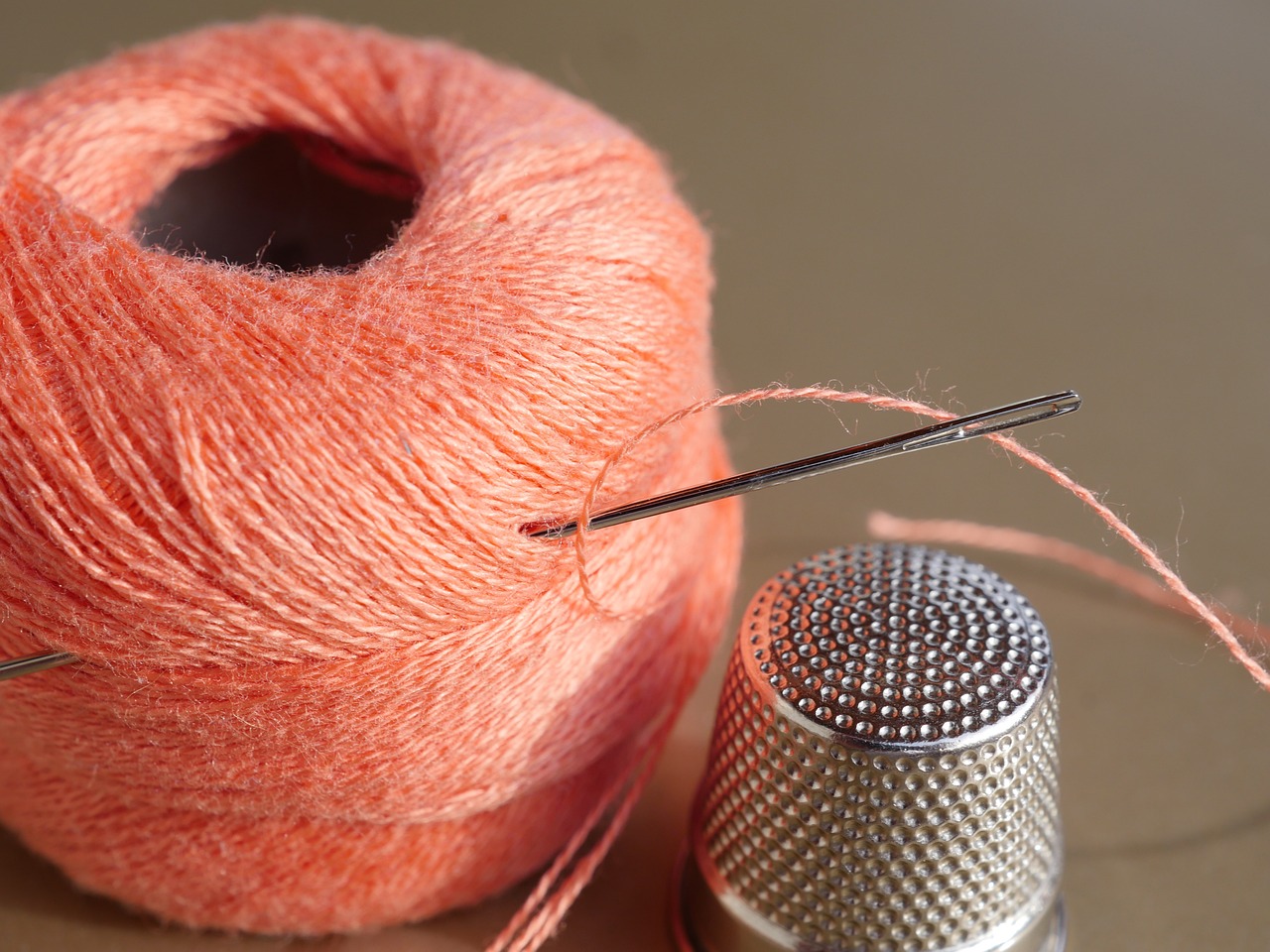
DIY Art Supplies
Creating homemade art supplies is not just a cost-effective solution; it’s a fantastic way to engage kids in the crafting process while also teaching them valuable skills. Imagine the joy on their faces when they realize that they can make their own paint or playdough right from the comfort of their kitchen! This hands-on experience not only fosters creativity but also encourages a sense of accomplishment. So, let’s dive into some simple recipes that will help transform your kitchen into an art studio!
One of the easiest and most fun DIY art supplies to make is homemade paint. With just a few common kitchen ingredients, kids can whip up their own vibrant colors. Here’s a quick recipe:
| Ingredients | Measurements |
|---|---|
| Flour | 1 cup |
| Water | 1 cup |
| Salt | 1/4 cup |
| Food Coloring | As desired |
To make the paint, simply mix the flour, water, and salt in a bowl until smooth. Then, divide the mixture into small containers and add a few drops of food coloring to each one. Stir until you achieve the desired color. This activity not only teaches kids about mixing ingredients but also allows them to experiment with different colors and textures.
Another exciting project is making natural dyes. Kids can explore the vibrant world of colors using fruits, vegetables, and even spices. For instance, they can use beet juice for red, turmeric for yellow, and spinach for green. Not only does this project promote creativity, but it also introduces children to the science of color mixing and the natural world. Here’s how to create your own natural dyes:
- Choose your base material (e.g., fruits, vegetables).
- Chop the material into small pieces and place them in a pot.
- Add enough water to cover the material and bring it to a boil.
- Let it simmer for about 30 minutes, then strain the liquid into a container.
- Use the dye for painting or coloring paper and fabrics!
These DIY art supplies not only save money but also allow children to take part in the creation process, which can be incredibly rewarding. Plus, it’s a great way to reduce waste by using items you already have at home. So, gather those kitchen staples and let your kids unleash their inner artists!
Q: Are homemade art supplies safe for kids?
A: Yes, as long as you use non-toxic ingredients, homemade art supplies are generally safe for children. Always supervise younger kids during the crafting process.
Q: Can we store homemade paint?
A: Absolutely! You can store homemade paint in airtight containers in the refrigerator for up to a week. Just give it a good stir before using it again!
Q: What if my child is allergic to certain ingredients?
A: Always check for allergies before starting any DIY projects. You can substitute ingredients with allergy-friendly options, ensuring a safe crafting experience.

Homemade Paint
Creating is not just a fun activity; it's an exciting adventure that transforms your kitchen into a mini art studio! Imagine the thrill on your child's face as they mix together common ingredients to create vibrant colors. This project is perfect for sparking creativity while also teaching kids about the science of mixing colors. Plus, it’s a fantastic way to save money on art supplies!
To make homemade paint, you'll only need a few simple ingredients that you probably already have at home. Here’s a quick recipe that kids can easily follow:
| Ingredient | Quantity |
|---|---|
| Flour | 1 cup |
| Water | 1 cup |
| Salt | 1/4 cup |
| Food Coloring | As desired |
To create the paint, simply combine the flour, water, and salt in a bowl. Stir until you achieve a smooth consistency. Then, divide the mixture into smaller containers and add a few drops of food coloring to each. The more drops you add, the more vibrant the colors will be! Kids will love experimenting with different combinations to create unique shades.
One of the best parts about homemade paint is that it’s non-toxic and safe for children. You can encourage them to use their fingers, brushes, or even sponges to apply the paint onto various surfaces, such as paper, cardboard, or even rocks. The possibilities are endless, and the outcome is always a surprise!
As they create, kids will not only be expressing their artistic talents but also developing important skills. This activity promotes fine motor skills as they learn to control their brush strokes and experiment with different techniques. Plus, it’s a wonderful bonding experience as you can join in on the fun, creating your own masterpieces alongside them!
So, gather those kitchen ingredients and let the creative chaos begin! Homemade paint is a fantastic way to unleash imagination while keeping costs low. Remember, the goal is to have fun and enjoy the process of creating art together!
- Is homemade paint safe for kids? Yes, homemade paint is made from non-toxic ingredients, making it safe for children to use.
- How long does homemade paint last? Homemade paint can last up to a week if stored in an airtight container in the refrigerator.
- Can I use other coloring agents instead of food coloring? Absolutely! You can use natural dyes from fruits and vegetables to create your colors.
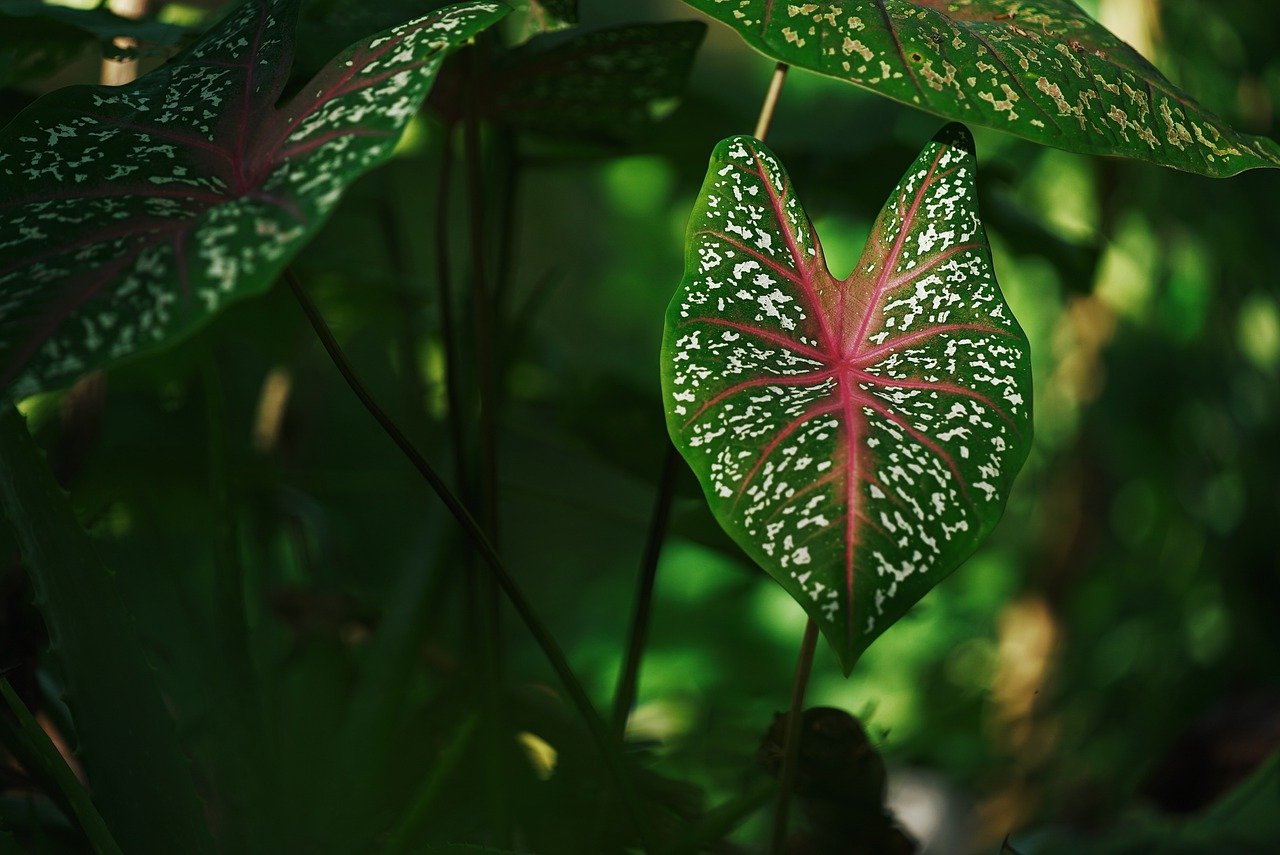
Natural Dyes
Creating is not only an exciting project for kids, but it also opens the door to a world of colors derived from the very nature around us. Imagine transforming everyday fruits and vegetables into vibrant hues that can be used for painting, dyeing fabrics, or even crafting beautiful paper! This hands-on activity not only teaches children about the science of color but also encourages them to think creatively about the materials they use.
To get started with natural dyes, you’ll need to gather some ingredients from the kitchen or the local grocery store. Common items include:
- Red cabbage for a lovely blue or purple shade
- Beets for a deep red
- Turmeric for a bright yellow
- Spinach for a fresh green
- Onion skins for a warm orange
Once you have your ingredients, the dye-making process is quite simple and can be a fun science experiment. Start by chopping your chosen fruits or vegetables into small pieces and placing them in a pot with water. Bring the mixture to a boil, then let it simmer for about 30 minutes. The longer you simmer, the more intense the color will be. After that, strain the liquid to remove the solids, and voila! You have your natural dye ready to use.
Kids will love experimenting with different combinations of materials to see what unique colors they can create. This not only fosters creativity but also teaches them about the importance of sustainability and using natural resources responsibly. They can even keep a journal to document their dye-making process, noting the ingredients used and the resulting colors. This adds an educational twist to the fun!
Moreover, using natural dyes can lead to discussions about the environment and the impact of synthetic dyes on our planet. Kids can learn about the beauty of nature while also understanding the value of eco-friendly practices. This project serves as a perfect blend of art and education, making it a win-win for parents and children alike.
In conclusion, creating natural dyes is an engaging and educational activity that sparks creativity in children. It allows them to connect with nature, learn about colors, and understand the importance of sustainability, all while having a blast! So gather those fruits and veggies, and let the dyeing adventure begin!
Q: What materials can I use for natural dyes?
A: You can use a variety of fruits and vegetables such as red cabbage, beets, turmeric, spinach, and onion skins to create natural dyes.
Q: How long do the dyes last?
A: Natural dyes can last a long time if stored properly in a cool, dark place. However, they may fade over time, especially if exposed to sunlight.
Q: Can I use natural dyes on different fabrics?
A: Yes! Natural dyes can be used on cotton, wool, and silk. Just make sure to pre-treat the fabric for the best results.
Q: Is it safe for kids to use natural dyes?
A: Yes, natural dyes made from fruits and vegetables are safe for kids. However, adult supervision is recommended, especially when boiling ingredients.

Seasonal Crafts
Seasonal crafts are a delightful way to engage children in the rhythms of nature and the festivities of the year. Each season brings its own unique colors, textures, and themes, allowing kids to explore their creativity while celebrating the world around them. From the blooming flowers of spring to the cozy decorations of winter, there’s a craft for every season that can ignite a child’s imagination.
For instance, during the vibrant season of spring, children can immerse themselves in flower crafts that not only showcase their artistic talents but also teach them about the beauty of nature. Imagine a sunny afternoon where kids gather colorful papers, fabric scraps, or even real flowers to create stunning arrangements. This activity not only fosters creativity but also enhances their understanding of colors and shapes.
In contrast, winter brings a different kind of magic, especially with the holidays. Kids can get involved in making holiday decorations that can be cherished for years to come. Crafting ornaments for Christmas or decorations for Hanukkah can become a family tradition, where each piece tells a story. Imagine a cozy evening spent with family, creating handmade gifts that spread joy and warmth during the chilly months.
Below is a brief comparison of some seasonal crafts that children can enjoy throughout the year:
| Season | Craft Ideas | Materials Needed |
|---|---|---|
| Spring | Flower Crafts | Paper, Fabric, Real Flowers, Glue |
| Summer | Beach-Themed Art | Sand, Shells, Paint, Canvas |
| Autumn | Leaf Art | Leaves, Paint, Paper, Glue |
| Winter | Holiday Decorations | Cardstock, Glitter, Ribbons, Paint |
These seasonal crafts not only allow kids to express themselves artistically but also help them connect with the changing world around them. Each project can be a conversation starter about the season's significance, encouraging children to observe and appreciate nature's beauty. Plus, crafting together can strengthen family bonds as everyone pitches in to create something special.
So, whether it’s creating a colorful wreath in the fall or painting a snowy scene in winter, seasonal crafts are a fantastic way to keep children engaged and inspired. The joy of seeing their creations displayed at home or gifted to loved ones can boost their confidence and creativity, making every season a celebration of art and nature.
- What age group are these crafts suitable for? Most of these crafts can be adapted for children of various ages, usually starting from around 3 years old with supervision.
- Can these crafts be done indoors? Absolutely! Many of these projects can be easily adapted for indoor settings, especially during inclement weather.
- How can I make these crafts more educational? Incorporate lessons about the seasons, nature, or even history related to specific holidays while crafting.
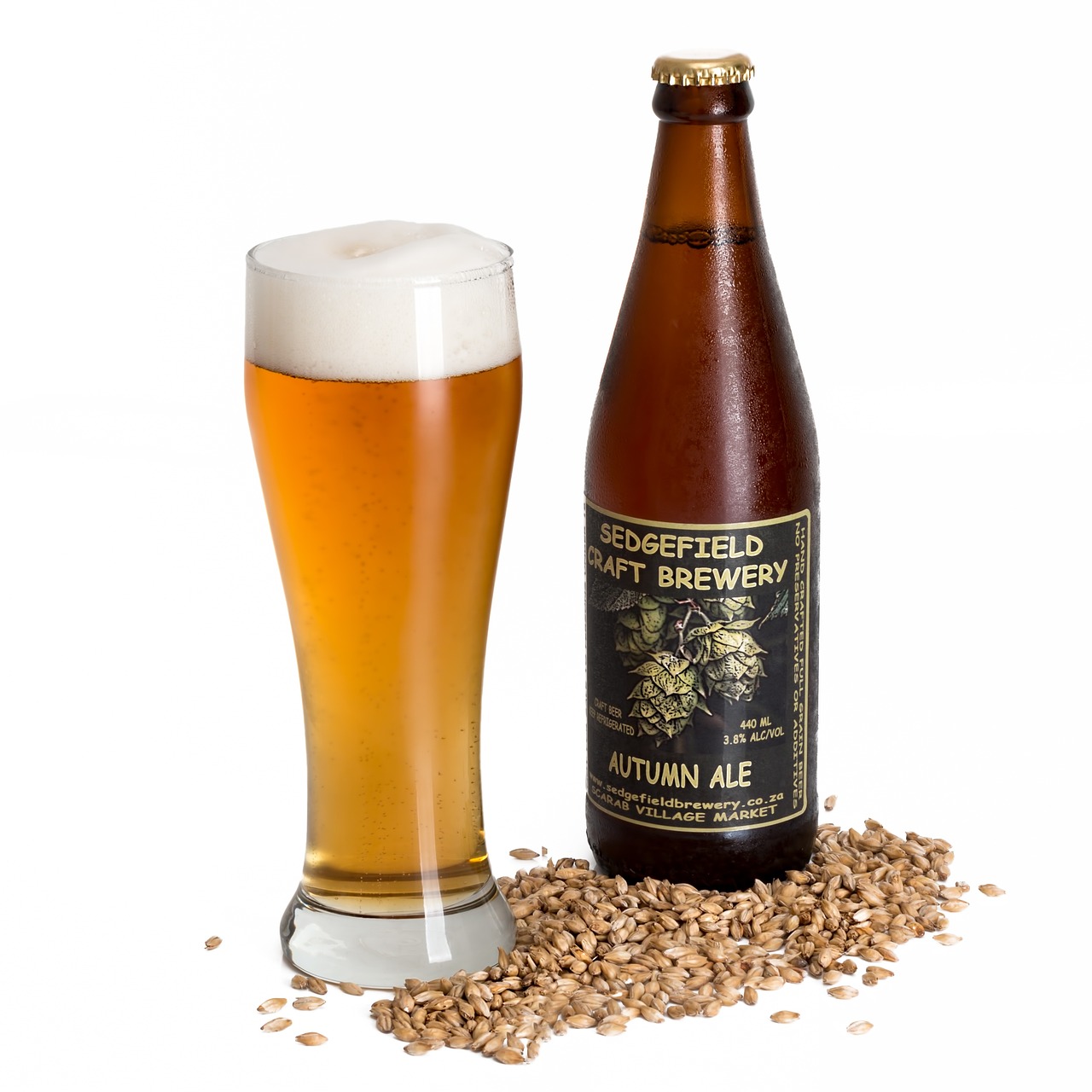
Spring Flower Crafts
As the chill of winter melts away and the warmth of spring begins to embrace us, what better way to celebrate this vibrant season than with some colorful spring flower crafts? These projects not only allow kids to express their creativity but also provide an excellent opportunity to explore the beauty of nature. Imagine walking through a garden bursting with color and then bringing that same joy into your home with DIY flower crafts!
One of the simplest yet most delightful projects is creating paper flowers. Using various colored papers, children can cut out petal shapes and assemble them into stunning blooms. This activity is not just fun; it also teaches them about symmetry and design. To make it even more engaging, you can have a mini art show at home where kids can showcase their creations. Just think of the pride they'll feel standing next to their own handmade flowers!
Another exciting idea is to use real flowers for crafting. Kids can collect flowers from the garden or local park and use them to make beautiful pressed flower art. By placing flowers between sheets of wax paper and using an iron, they can create stunning artwork that captures the essence of spring. This project not only fosters creativity but also teaches kids about the different types of flowers and their characteristics. Plus, the end result is a lovely decoration that they can hang in their room or gift to a family member.
For those who love a bit of texture, why not try fabric flower crafts? Using scraps of fabric, children can cut out flower shapes and sew or glue them together. This hands-on activity enhances fine motor skills while allowing them to experiment with colors and patterns. You can even turn these fabric flowers into hair accessories or embellishments for bags, making them functional as well as decorative!
To inspire even more creativity, consider setting up a flower craft station at home. Gather materials like colored paper, fabric, glue, scissors, and markers, and let the kids' imaginations run wild. You could even introduce a theme for each crafting session, such as "Garden Party" or "Color Explosion," to keep things exciting. The possibilities are endless, and each project will bring a new splash of color into your home.
In summary, spring flower crafts are a fantastic way to celebrate the season while fostering creativity and learning in children. Whether it's through paper, fabric, or real flowers, these projects provide a delightful avenue for self-expression. So grab your crafting supplies and let the floral fun begin!
- What materials do I need for spring flower crafts? You can use paper, fabric, real flowers, glue, scissors, and any decorative items like beads or buttons.
- Are these crafts suitable for all ages? Yes! You can adapt the complexity of the projects based on the age and skill level of the children.
- How can I preserve real flowers for crafting? Pressing flowers between heavy books or using a flower press is a great way to preserve them for your projects.

Winter Holiday Decorations
As the winter season approaches, a magical spirit fills the air, and what better way to embrace this festive time than by creating your own winter holiday decorations? Engaging in DIY projects not only allows children to express their creativity but also fills the home with warmth and cheer. Imagine the joy of hanging handcrafted ornaments on the tree or placing unique decorations around the house, each piece telling a story of creativity and love.
One of the most delightful aspects of making winter holiday decorations is the variety of materials that can be used. From glittery paper to natural elements, the options are endless. For instance, kids can use recycled materials like old magazines, cardboard, and even fabric scraps to craft ornaments that are both beautiful and eco-friendly. This not only teaches them about sustainability but also encourages them to think outside the box.
Here are a few fun ideas to inspire your winter holiday crafting sessions:
- Paper Snowflakes: Transform simple sheets of paper into intricate snowflakes. Kids can fold and cut to create unique designs that can be hung in windows or from the ceiling.
- Homemade Ornaments: Using salt dough, children can create ornaments shaped like stars, trees, and other festive symbols. Once baked, they can paint and decorate them to add a personal touch.
- Decorative Garland: Stringing together popcorn or cranberries creates a lovely and edible garland that can adorn the Christmas tree or mantle.
To make the crafting experience even more enjoyable, consider hosting a holiday decoration-making party with friends and family. Set up a crafting station with all the necessary supplies, and let the kids' imaginations run wild. Not only will this foster a sense of community, but it will also create lasting memories as everyone works together to create beautiful decorations.
In addition to these projects, don't forget to include a touch of nature in your decorations! Pinecones, twigs, and even dried orange slices can be transformed into stunning centerpieces or hanging decorations. The natural scents and textures can bring a cozy, rustic feel to your home, reminding everyone of the beauty of the winter season.
As you dive into these creative projects, remember that the goal is to have fun and enjoy the process. Each decoration crafted is a reflection of the love and joy of the season, making your home feel even more special. Plus, when the holidays are over, these handmade treasures can become cherished keepsakes, reminding everyone of the wonderful times spent together.
Q: What materials do I need for making winter holiday decorations?
A: Common materials include paper, scissors, glue, paints, natural elements like pinecones, and recycled items such as cardboard and fabric scraps.
Q: Are there any age-appropriate projects for younger kids?
A: Absolutely! Simple projects like paper snowflakes or painting salt dough ornaments are perfect for younger children, allowing them to participate in the fun safely.
Q: How can I incorporate educational elements into these crafts?
A: You can teach kids about recycling through the use of materials, or discuss the significance of various winter holidays as they create decorations that represent those celebrations.
Q: What should I do with the decorations after the holidays?
A: Consider storing them in a special box to use year after year, or you could even gift them to family and friends as a reminder of the joy of the season!
Frequently Asked Questions
- What materials do I need for recycled materials art?
For recycled materials art, you can use items like cardboard boxes, plastic bottles, old newspapers, and even fabric scraps. The beauty of this type of art is that you can use almost anything you have at home, turning everyday trash into creative treasures!
- How can I encourage my kids to collect natural materials for crafts?
Take your kids on a nature walk where they can explore the outdoors and collect interesting leaves, twigs, and stones. Make it a fun scavenger hunt by giving them a list of items to find. This not only sparks creativity but also fosters a love for nature!
- Can I make homemade paint with my kids?
Absolutely! Making homemade paint is a fun and easy project. You can use ingredients like flour, salt, and food coloring. Just mix them together, and you’ll have vibrant paint ready for all sorts of art projects!
- What are some fun seasonal crafts for kids?
Seasonal crafts can vary widely! In spring, kids can make flower crafts using paper or real flowers. During winter, they can create holiday decorations like ornaments or festive cards. Each season offers a unique opportunity to explore different themes and materials!
- How do natural dyes work, and can kids make them?
Natural dyes are made from fruits, vegetables, and even spices! Kids can create their own dyes by boiling these items in water to extract the colors. It’s a fantastic way to teach them about color mixing and the science behind dyes while having fun!
- Are these art projects safe for young children?
Yes! Most of the art projects mentioned use safe and non-toxic materials. However, it’s always a good idea to supervise younger children, especially when using items like scissors or small objects that could be a choking hazard.



















